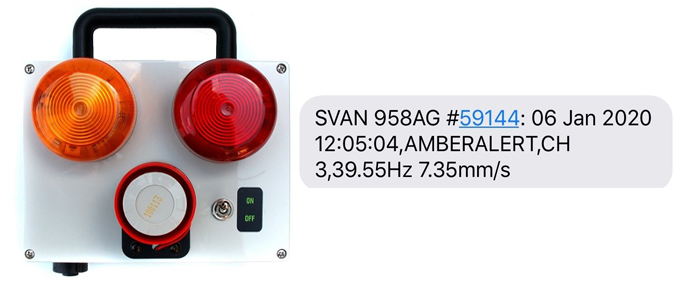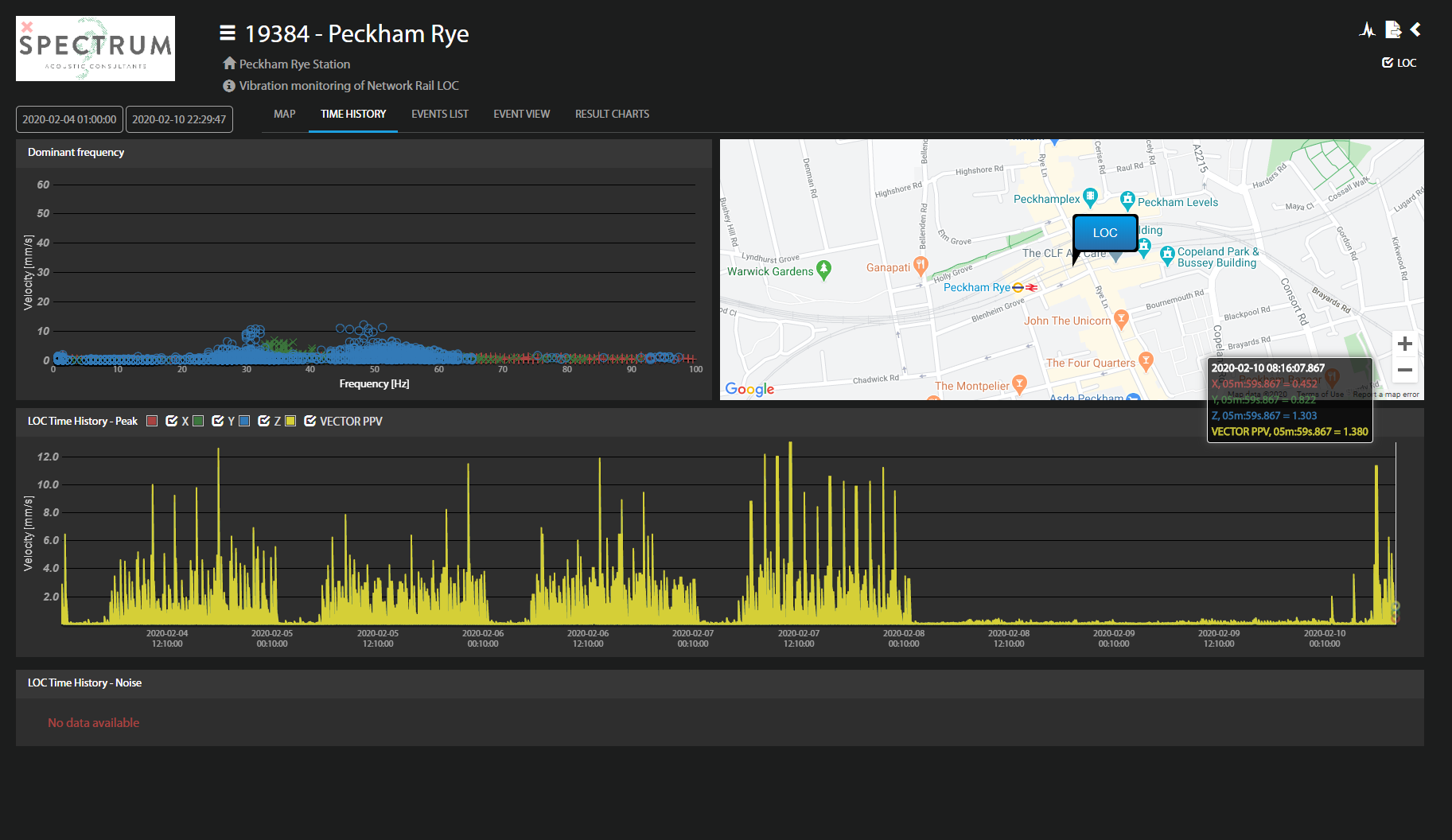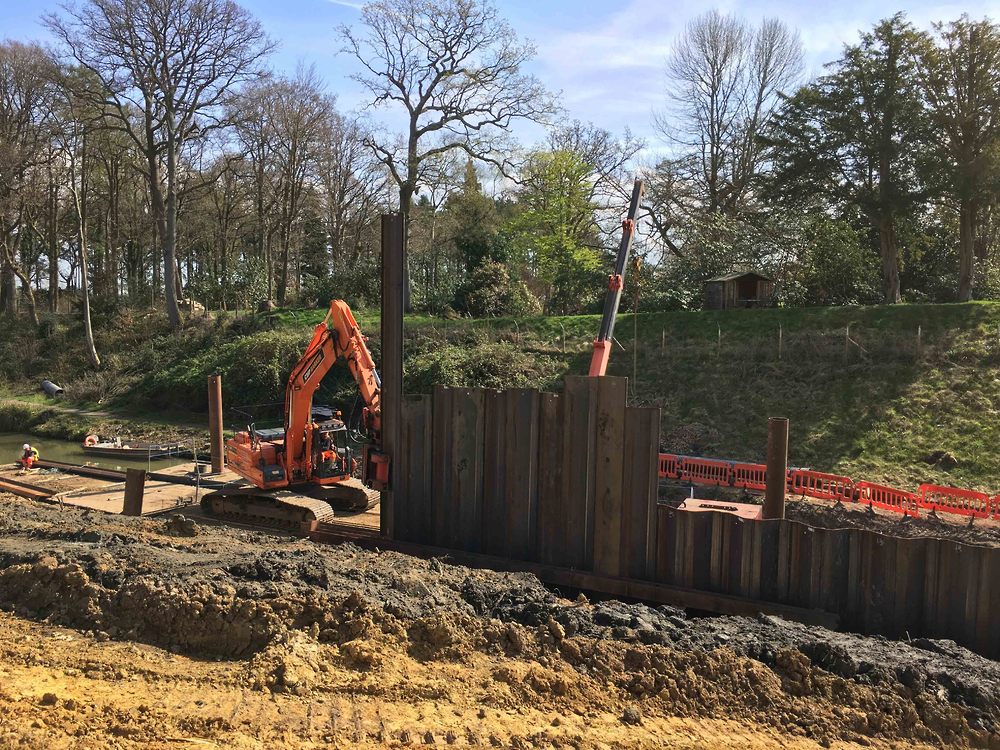- Building Acoustics
- Industrial Noise
- Vibration in Buildings
- Vibration in Pipework
- Planning, Permitting & Sustainability
- Pulsation Analysis
- Surge Analysis
- Measurement & Testing
- Services to Consultants
Construction Vibration Monitoring: Real-time vibration monitoring services to contractors on construction and demolition projects
13 March 2020 by James Ward, Senior Consultant
Why monitor vibration?
Contractors are often required to undertake vibration monitoring during construction or demolition projects in order to ensure there is no damage to sensitive structures.
Examples of this could include piling next to residences, railway lines, gas piping or sensitive buildings and Spectrum have undertaken projects involving all of these scenarios.
What units are used to measure vibration?
Vibration is typically measured in mm/s as:
- a peak particle velocity (PPV) or
- in mm/s2 as an acceleration,
and the measurement parameters used will typically be determined by the specific application.
For construction or demolition works, it is becoming more typical to specify and measure vibration in terms of PPV.
Where do vibration limits come from?
Vibration guidelines and limits may come from employer industry guidelines (eg. for operations close to National Grid Gas piping) or, more typically, from British Standard BS 5228-2:2009+A1:2014 Code of practice for noise and vibration control on construction and open sites – Part 2: Vibration, which is typically cited by Local Authorities when an application for prior consent is made by the contractor under Section 61 of the Control of Pollution Act 1974.
How are vibration limits derived?
Vibration limits are generally specified in order to mitigate the effects of vibration due to one of the following:-
- Human response to vibration
- Structural response to vibration
Human response to vibration
Human response to vibration ranges from just perceptible to intolerable and typical values equating to increasing levels of response are shown below:-

Typical human response to vibration (ref. BS5228-2)
Structural response to vibration
Transient vibration guide values for cosmetic damage to buildings are given in the table below. Minor cosmetic damage is possible at twice the values given and major damage at four times the values given.

Transient vibration guide values for cosmetic damage (ref. BS5228-2)
It should be noted that buildings are more sensitive to continuous vibration (eg. vibratory-driven sheet piles) than transient vibration (eg. impact hammer piling), since this can set up resonances resulting in higher strains in the building structure. Hence, where continuous vibration occurs the above guidelines might reduce by 50%.
How is vibration typically measured on site?
Instrumentation used to measure vibration typically comprises a geophone or accelerometer connected to a suitable meter, as shown below.

Typical site vibration monitoring equipment
How will I know if the project vibration limits are met or exceeded?
Vibration meters can typically be set up to warn operators of threshold vibration levels in several ways as shown below:

Visual alarm, and text message or email to operator’s mobile phone

Real-time online monitoring via dedicated website
Conclusions
Construction and demolition can generate high vibration levels that can impact on comfort and/or structural integrity. In view of this, projects frequently have vibration limits imposed at specific locations such that vibration monitoring is required.
Spectrum Acoustic Consultants Ltd regularly undertake noise and/or vibration monitoring for a range of clients from the construction, demolition, piling, rail and architectural sectors.
To find out more, get in touch via our Contact page.





